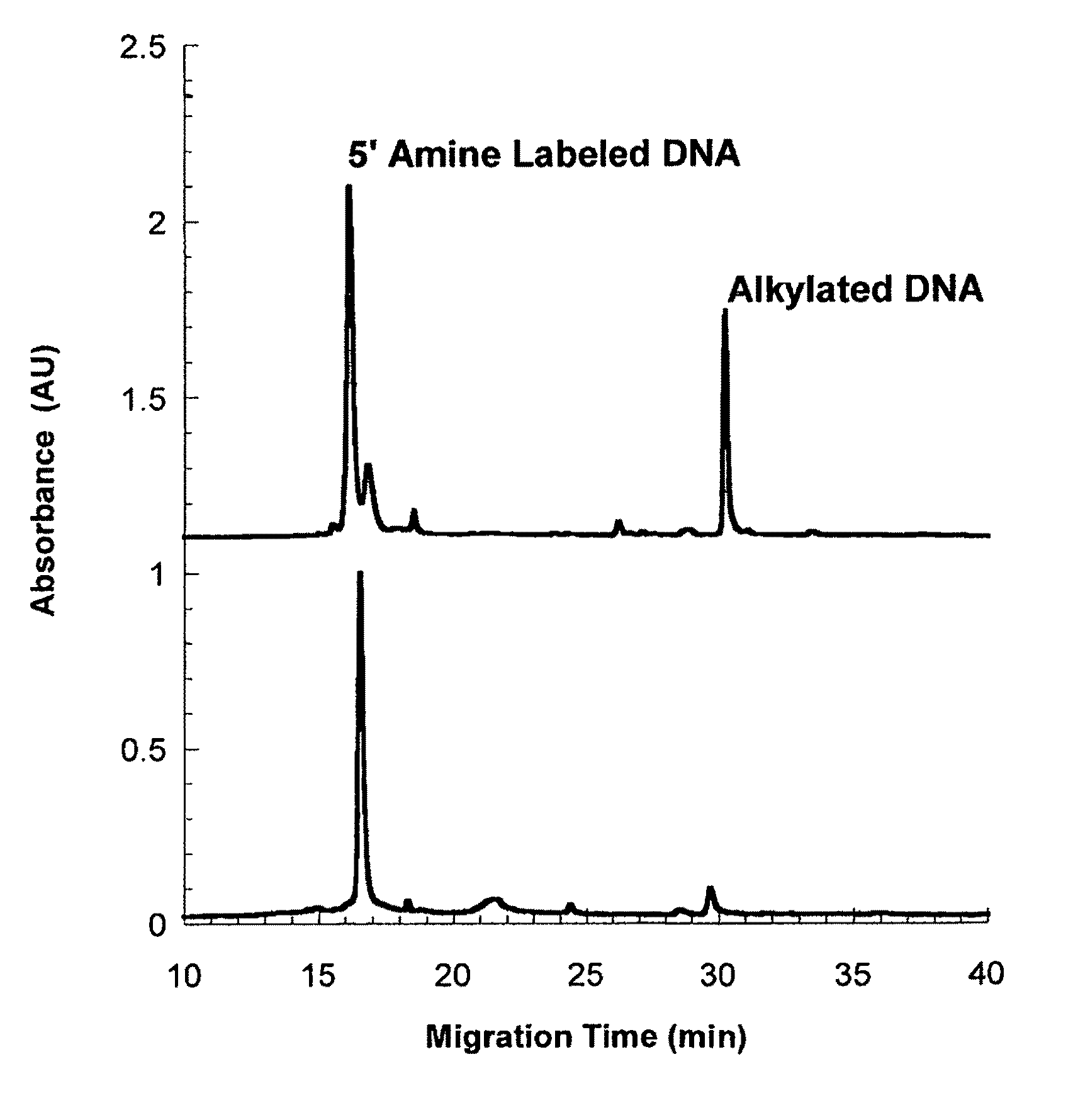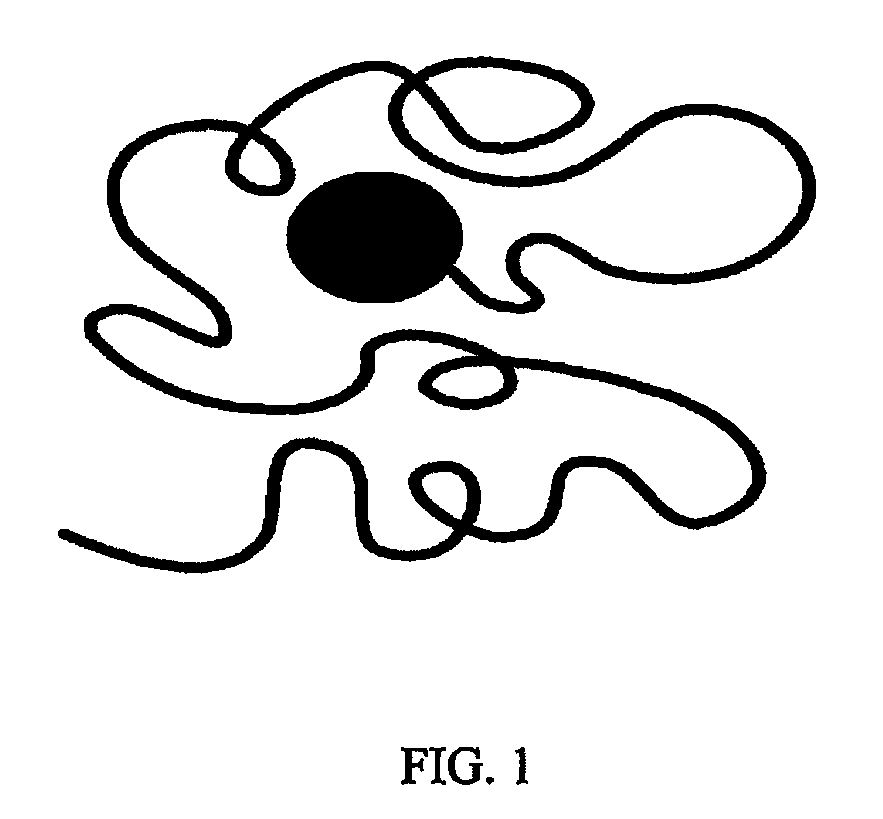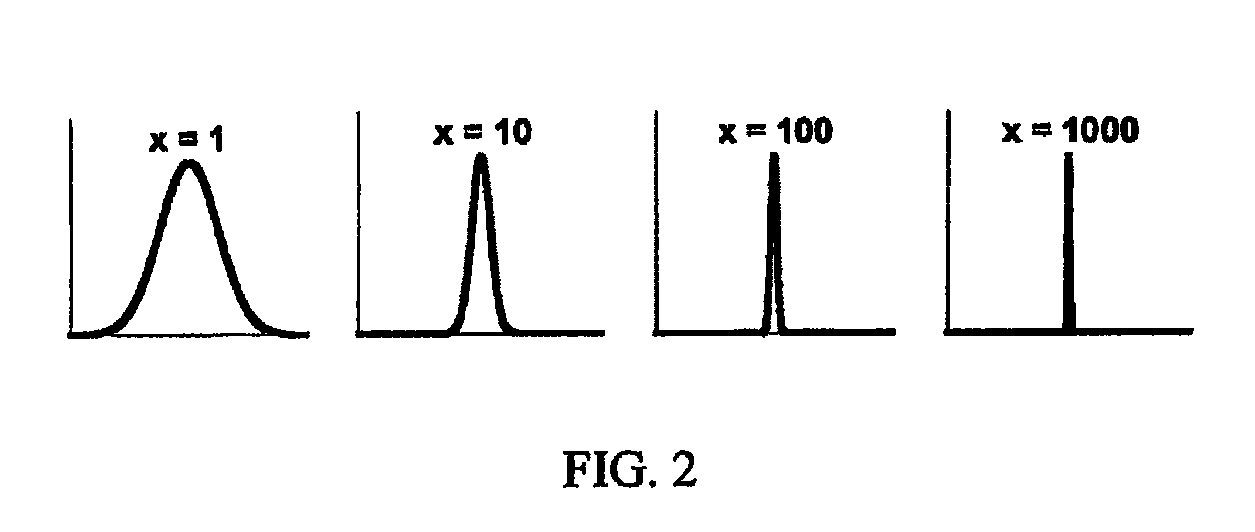Transiently bonding drag-tags for separation modalities
a technology of transient bonding and drag-tags, which is applied in the direction of fluid pressure measurement, liquid/fluent solid measurement, peptides, etc., can solve the problems of limited applicability of methods such as elfse, the limitation of the ability to produce large, monodispersed drag-tags, etc., and achieve the limitation of the applicability of methods
- Summary
- Abstract
- Description
- Claims
- Application Information
AI Technical Summary
Benefits of technology
Problems solved by technology
Method used
Image
Examples
example 4
[0136]In order for a separation modality to be capable of performing separations of DNA sequencing products, the physical mechanism responsible for the separation must be compatible with the extension of the primer by DNA polymerase. Since the enzymes typically used for DNA sequencing are minor mutations of enzymes commonly employed in PCR, the ability of PCR enzymes to extend aDNA primers translated well to DNA sequencing applications. Tests using a nucleic acid primer comprising a lipophilic moiety bonded to the 5′ end confirmed that the alkylation of the nucleic acid does not inhibit DNA polymerase from extending the primer, or the primer annealing to the template.
[0137]UV melting curves were used to determine the melting temperature of the alkylated DNA generated using solid phase synthesis. UV melts were conducted in a Varian Cary 3 spectrophotometer bearing a peltier controlled cell holder. The 34 nt synthetic aDNA oligonucleotide was incubated with its commercially-synthesize...
example 5
[0146]DNA fragments were prepared by a PCR reaction. Cycle sequencing reactions were conducted in a SmartCycler (Cepheid, Sunnyvale, Calif.) at a total volume of 20 μl. Cycle sequencing reactions based on the Therminator DNA polymerase included the following: 1000 nM C12 Bodipy-Fl-aDNA or C18-aDNA primer, 0.05 mM dNTP mixture 0.1 mM chain terminator (acyATP or Fluorescein-labeled ddGTP), 1× Thermo Pol buffer, (New England Biolabs, Ipswich, Mass.), 100 ng / μ1 M13mp18 single-stranded DNA template, (NEB), and 0.05 Units / μl Therminator DNA polymerase (NEB). The thermocycling conditions were as follows: An initial template denaturation step of 5 minutes at 95° C. was conducted, followed by 55 cycles of 95° C. for 30 seconds, 55° C. for 30 seconds, and 72° C. for 120 seconds. A final elongation step following thermal cycling was conducted for 5 minutes at 72° C. Following reaction, residual nucleotide triphosphates and reaction buffer salts were removed using a Centri-Sep column. (Princeto...
example 6
[0153]In the experiment to test separating DNA by transiently attaching a drag-tag to an allylated DNA analog, a running buffer comprises a drag-tag having a micelle structure was used. The micelle was formed with Triton X-100 from Fluka. Stock solutions of Triton X-100 were prepared by vortexing a suitable amount of Triton in 50 mM Tris MES buffer, pH 8.0, to arrive at a stock concentration of 48 mM. Aliquots were prepared at concentrations ranging from 1.2 to 48 mM, vortexed, and centrifuged to remove bubbles. The Tris MES buffering system was chosen in an effort to minimize fronting of the DNA peak caused by electrodispersion. Tris HCl and Tris acetate buffering systems were also investigated but produced significant peak distortion for high DNA concentrations. Notwithstanding this distortion, Tris HCl and Tris acetate may be used as alternative buffering systems, although Tris MES is preferred.
PUM
| Property | Measurement | Unit |
|---|---|---|
| electric fields | aaaaa | aaaaa |
| electric fields | aaaaa | aaaaa |
| electric fields | aaaaa | aaaaa |
Abstract
Description
Claims
Application Information
 Login to View More
Login to View More - R&D
- Intellectual Property
- Life Sciences
- Materials
- Tech Scout
- Unparalleled Data Quality
- Higher Quality Content
- 60% Fewer Hallucinations
Browse by: Latest US Patents, China's latest patents, Technical Efficacy Thesaurus, Application Domain, Technology Topic, Popular Technical Reports.
© 2025 PatSnap. All rights reserved.Legal|Privacy policy|Modern Slavery Act Transparency Statement|Sitemap|About US| Contact US: help@patsnap.com



